Championships None | Date founded 1970 | |
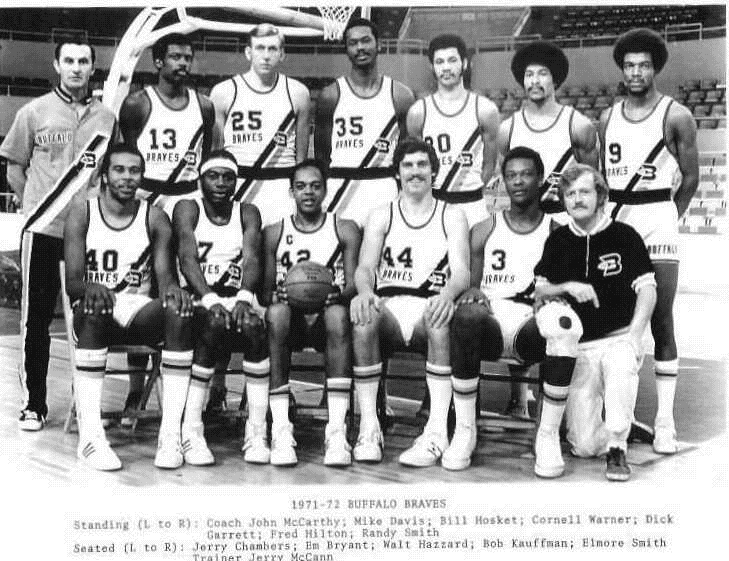 | ||
History Buffalo Braves1970–1978San Diego Clippers1978–1984Los Angeles Clippers1984–present Team colors Black, White, Orange, Columbia Blue Head coach Dolph Schayes (1970–1972)Johnny McCarthy (1972)Jack Ramsay (1972–1976)Tates Locke (1976–1977)Bob MacKinnon (1977)Joe Mullaney (1977)Cotton Fitzsimmons (1977–1978) Ownership Paul Snyder (1970–1977)John Y. Brown, Jr. (1976–1978)Harry T. Mangurian, Jr. (1977–1978) (minority partner) Owners Paul Snyder, John Y. Brown Jr., Harry T. Mangurian Jr. | ||
The Buffalo Braves were an American professional basketball franchise based in Buffalo, New York. The Braves competed in the National Basketball Association (NBA) as a member club of the league's Eastern Conference Atlantic Division from 1970 until 1978. In 1978, Braves owner John Y. Brown, Jr. swapped franchises with then-Boston Celtics owner Irv Levin, who then moved the team to San Diego, where it was renamed the San Diego Clippers. The franchise moved to Los Angeles in 1984, and is now known as the Los Angeles Clippers.
Contents
- Play begins
- Initial hiring
- 197172 season
- 197273 197374 seasons
- 197475 197576 seasons
- 197677 season
- 197778 season
- Team colors
- Broadcasting
- References
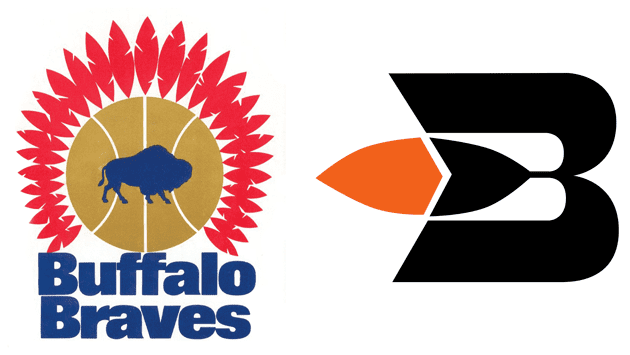
Play begins
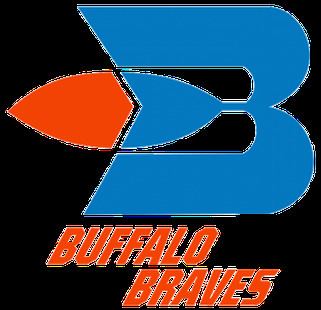
The Braves were one of three NBA expansion franchises that began play in the 1970–71 season (the others being the Portland Trail Blazers and Cleveland Cavaliers). Originally owned by an investment firm that had few ties to Buffalo, by the end of the first season, Paul Snyder, a then 33-year-old entrepreneur who had recently cashed in on the sale of his Freezer Queen business, had bought the franchise. They played their home games at the Buffalo Memorial Auditorium, sharing the arena with another new franchise, the National Hockey League (NHL)'s Buffalo Sabres, who also debuted in 1970, as well local college basketball teams that had used the auditorium for decades prior. Because the Braves only had third choice of dates (behind the Sabres and Canisius College) at the auditorium, from 1971–75, the Braves were forced to play a total of 16 home games at Maple Leaf Gardens in Toronto; in addition to alleviating the auditorium's scheduling issues, the Braves also played internationally in the hopes of expanding their fan base beyond Western New York and into the Greater Toronto Area (a similar strategy was employed by the National Football League (NFL)'s Buffalo Bills from 2008 until 2013). The NBA had two previous teams in Western New York, the Rochester Royals and the Syracuse Nationals.
Initial hiring
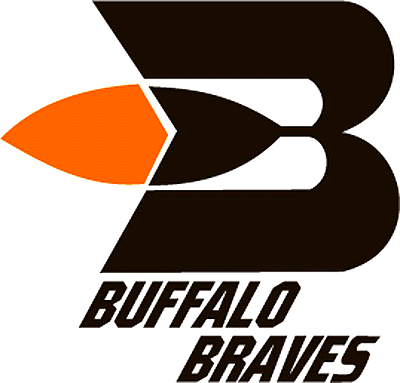
The team's first head coach was Hall of Famer Dolph Schayes and the franchise's first star players were Bob Kauffman and Don May, who were acquired in the 1970 NBA Expansion Draft. However, in the NBA Draft of 1970, Buffalo passed on hometown hero Calvin Murphy, a 5-foot-9 point guard from Niagara University and picked Princeton graduate, John Hummer, as their first round draft pick. Murphy would eventually be inducted into the Hall of Fame. As is typical of first-year expansion teams, the Braves finished with a dismal record, 22–60, seven games ahead of the Cleveland Cavaliers, their expansion cousins, who finished at 15–67. Kauffman, who averaged 4.3 points per game the previous year with the Chicago Bulls, led Buffalo in scoring with 20.4 points per game and earned a spot on the 1971 NBA Eastern Conference All-Star team.
1971–72 season
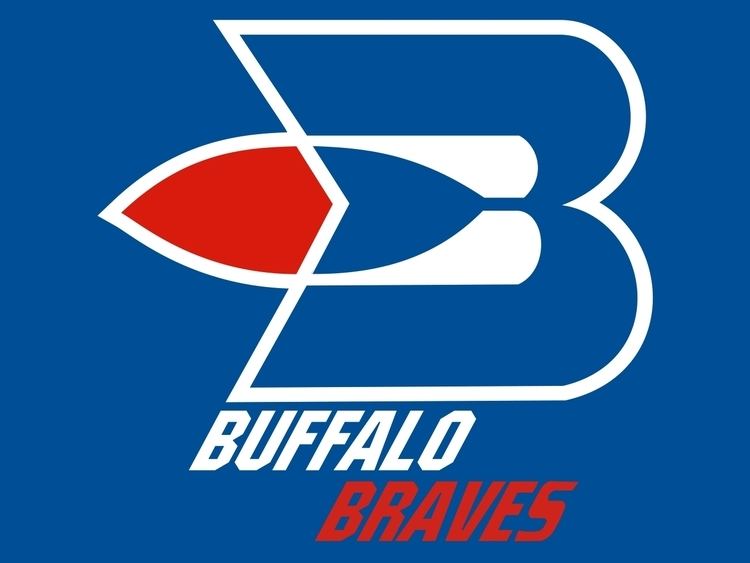
The Braves repeated their 22–60 record in the 1971–72 season, but did make good acquisitions that would make the club better. Buffalo drafted center Elmore Smith from Kentucky State University and local favorite Randy Smith from Buffalo State College. Johnny McCarthy replaced Schayes one game into the season as the team's head coach.
1972–73 & 1973–74 seasons
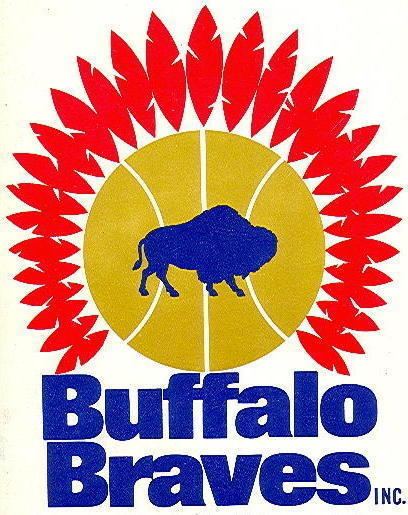
The team did slightly worse in the 1972–73 season, as it went 21–61 under new head coach Dr. Jack Ramsay. In a showcase of the futility of the '72-'73 Braves, during the team's fifth game of the season on October 20, 1972 the team set an NBA record which still stands for most points in a single quarter with 58, and despite this still managed to lose to the Boston Celtics 126-118. The Braves' big move that season was drafting forward/center Bob McAdoo from North Carolina. The team finally made its first playoff appearance in 1973–74, in which it faced the Boston Celtics in the first round and lost in six games. That season, McAdoo posted averages of 30.6 points and 15.1 rebounds; this is the last time any player has averaged at least 30 points and 15 rebounds in the same NBA season. Also, that season, the Braves rookie Ernie DiGregorio won the NBA Rookie of the Year Award.
1974–75 & 1975–76 seasons
In 1974–75, McAdoo was awarded the NBA Most Valuable Player Award, averaging 34.5 points, 14.1 rebounds. and 2.12 blocks per game, while shooting 51.2% from the field and 80.5% from the free-throw line. The Braves made trips to the playoffs in both 1974–75 and 1975–76, the latter of which would be their last playoff berth playing in Buffalo.
1976–77 season
The Braves by this point were a modest success, both on the court and off; the team was drawing close to the league average in fans, had solid broadcasting ratings and was turning a consistent profit. Even so, by 1976 Snyder was facing severe pressure to sell the team and get it out of Buffalo. In a 2016 interview, Snyder laid particular blame on Father James Demske, who represented the Canisius Golden Griffins men's basketball team; Demske believed that the Braves posed a threat to the Little Three rivalry in college basketball, then in the waning days of its peak, and was making it purposely difficult for the Braves to get good home dates at the auditorium. This in turn angered the NBA, who pressured Snyder to resolve the issue in short order. At the time, Snyder's more public feuds were with the Sabres, who represented Buffalo's old money circuit compared to the more nouveau riche status of Snyder; he later attributed these feuds to his own inexperience with sports ownership and now speaks in more conciliatory tones regarding his hockey competition.
The June 15, 1976 issue of Buffalo's Courier-Express blasted the headline "Braves Go to Florida, Leaving 'Hockey Town'". Snyder had a handshake deal to sell the team for $6.1 million to hotel owner Irving Cowan, who would move the Braves to the Hollywood Sportatorium outside of Miami, Florida. However, the city of Buffalo filed a $10 million damage suit to block the move. The sale eventually fell through and the Braves and the city signed a new 15-year Memorial Auditorium lease in July with a provision that the lease could be voided if the team did not sell 5,000 season tickets in any season. Later that summer, Snyder finally sold 50% of the franchise to businessman John Y. Brown, Jr., who had previously owned the Kentucky Colonels of the American Basketball Association (ABA). Brown later acquired the remaining half from Snyder sometime in the 1976–77 season and resold that share to another businessman, Harry T. Mangurian, Jr.
Brown and Mangurian proceeded to dismantle the Braves. Ramsay, unwilling to have his career hurt by the change in ownership, left for the Portland Trail Blazers. A provision in the team sale agreement stipulated that if Brown sold the contract of any Braves player, then the money would go to Snyder and the purchase price would be reduced. This subsequently occurred when the Braves sent McAdoo to the New York Knicks for players and cash midway through the 1976–77 season. Before the first game in the 1976–77 season the Braves also managed to acquire eventual Hall-of-Fame center Moses Malone from Portland. However, after just two games in which he played a total of six minutes, he too was traded; he was sent to Houston for two draft picks. He would finish the season in Houston averaging 13 points and 13 rebounds while only two years later winning his first of three MVP Awards. The Braves would go through four head coaches in the next two seasons: Tates Locke, Bob MacKinnon, Joe Mullaney (formerly coach of the Colonels) and Cotton Fitzsimmons.
1977–78 season
The team's poor play in its final two years (30–52 in 1976–77 and 27–55 in 1977–78) and the overt attempts to break the lease on Memorial Auditorium drove attendance down below the threshold that would have been needed to break the Braves' lease. John Y. Brown met with Irv Levin, who then owned the Celtics, and negotiated a deal in which the owners would swap franchises, with Brown taking control of the Celtics and Levin getting the Braves. Levin was a California businessman, and wanted to own an NBA team in his native state. However, he knew the NBA would not even consider letting him move the Celtics. He was therefore very receptive to Brown's offer. The deal was brokered by NBA general counsel David Stern, who became the league's commissioner in 1984. Following what would be the Braves' final season in Western New York, the NBA owners voted 21–1 to let the team relocate. As Levin wanted, he became owner of a team in San Diego after the 1977–78 season, which became the San Diego (now Los Angeles) Clippers. As part of the transaction, the teams traded most of the players on their rosters. It could therefore be argued that the successor to the Braves franchise are the Boston Celtics.
Team colors
For the franchise's first season (1970–71) team colors were blue, red & gold; home white uniforms featured lettering and striping in only red & gold, with road uniforms being blue, also with red & gold lettering and striping. In the second season, (1971–72) color scheme was changed to only orange and black, with now familiar "feather B" logo featured on uniforms that had diagonal stripes across both jerseys and shorts (predominant color on the road being orange). This scheme was kept one more season (1972–73) and, with the 1973–74 season, the team adopted another new color scheme of Columbia blue and white, with uniforms including black accents outlining the lettering and also striping on jerseys and shorts; they continued with these uniforms until the team was moved to California. (Despite the new color scheme, the logo – which no longer appeared on the uniforms – remained the black and orange "feather B").
Broadcasting
For most of the team's existence, WBEN (930 AM) was the radio home of the Buffalo Braves, with Van Miller on play-by-play. Miller also called play-by-play on the team's telecasts over WBEN-TV (channel 4, now WIVB-TV), the local CBS television affiliate. Snyder claimed that the Braves broadcasts were drawing far higher ratings than the Sabres' at the time and insisted that if he had managed to keep the Braves in Buffalo, the Sabres would have been the team eventually forced to move out of the city.
